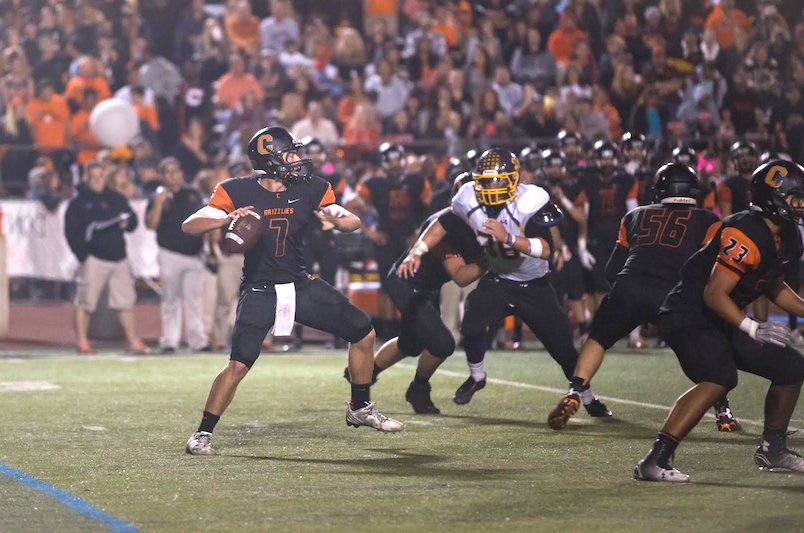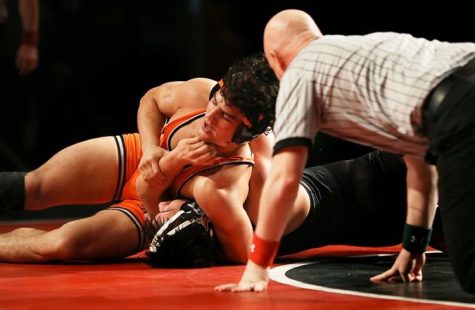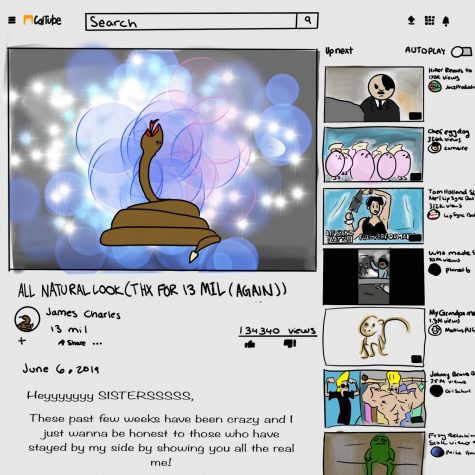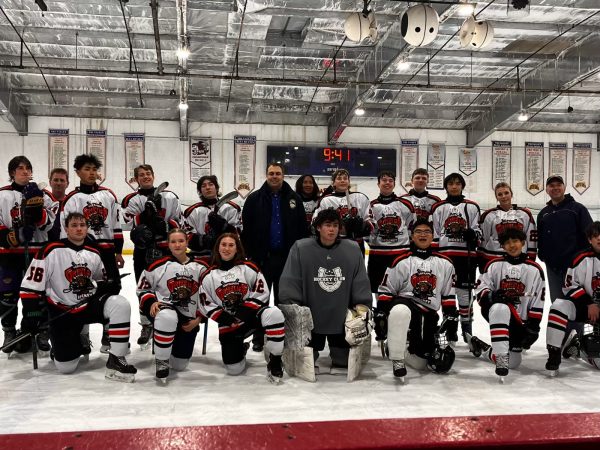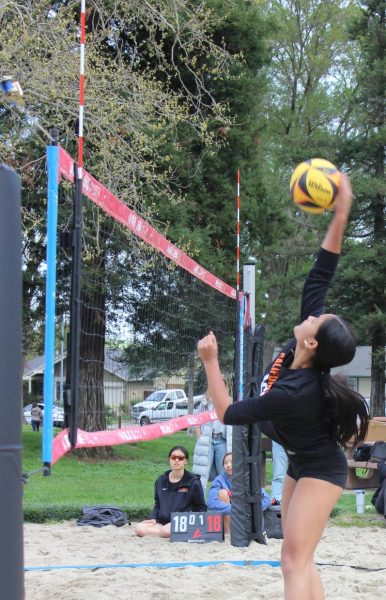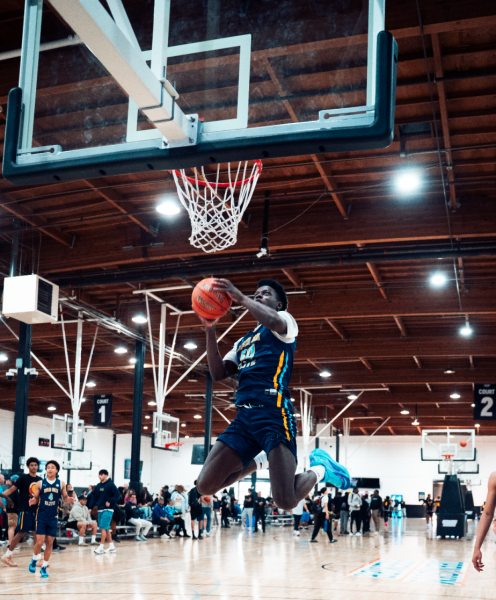Tackling concussions head on
High school football players throughout the state won’t be able to practice in full pads more than twice a week beginning next year.
In light of public outcry over football related head injuries, Governor Jerry Brown signed a law this summer that restricted high school football teams from practicing in full pads to two times a week.
In addition, the California Interscholastic Federation (CIF), which governs state high school athletics, began limiting this fall the number of hours that all high school athletes can practice to 18 hours per week. For football players, this includes practice time on the field, as well as in the weight and film rooms.
The new state law was passed in June in wake of recent media outcry regarding the safety of football players. It is to take effect Jan. 1, 2015.
But players and coaches have expressed concern that the new law could interfere with their development on the field.
“The media is almost glorifying it,” Cal High varsity football coach Eric Billeci said. “Every time someone has a concussion, we jump to conclusions. It’s almost like the next cool thing.”
Billeci is concerned that the media, which now has greater access to injury reports and the sport as a whole, is causing a national panic over concussions that wasn’t there 15 to 20 years ago. He and some players believe the new law could be going too far and is unnecessary.
“It’s like saying swimmers can only touch the water twice a week,” said varsity defensive tackle Riley Gary, a junior. “It doesn’t make sense.”
Billeci said his experience coaching football has not at all been plagued with player concussions, and that he has had to deal with very few concussions, especially during practice.
He also said he has never had a player quit football because of concussions.
“This new law will change how we approach games for sure,” said varsity offensive lineman Kyle Lark, a junior. “However, if we can prepare properly, we should be able to overcome this.”
Other people around the game are not too concerned about the rule being detrimental to the game.
Athletic Director Arley Hill, who comes from a long line of football players and coaches, is pleased with the new law. Hill concedes football is a violent game, but he also believes that the football community is making great strides in this area.
“It’s a step in the right direction,” said Hill, noting he and his family never had to deal with concussions when coaching. “We won’t be able to prevent concussions from the game entirely, but we are improving the overall safety of our players.”
Football is responsible for more than 11 percent of sports related head injuries in high school, says Tom Farrey of espn.com. Three high school football players have died since the beginning of the season, including at least one who suffered a serious head injury, according to CNN.
A varsity football player from a suburban New York high school was killed after colliding with an opponent during a game, a school official told CNN.
Tom Cutinella, a 16 year old student at Shoreham-Wading River High School, suffered a serious head injury during an Oct. 1 game, according to police reports.
“It was the result of a typical football play,” superintendent Steven Cohen told reporters. “It was just a freak accident.”
Cutinella stood up after the collision and then collapsed, Cohen told reporters. The player had been blocking for a teammate, Newsday reported.
In Alabama, Demario Harris Jr., 17, of Charles Henderson High School in Alabama died on Sept. 28, two days after making a tackle in a football game, according to AL.com. The official cause of death was not immediately known.
On September 26, Isaiah Langston, a 17 year old student at Rolesville High School in North Carolina, collapsed on the field before a game, according to CNN affiliate WTVD. The official cause of death is not known but his older brother told WTVD that his collapse on the field had to do with a blood clot in his brain.
According to ScienceDaily.com, concussions can cause long-term memory loss, dementia, ADHD, depression, and anxiety. The NFL was sued for $675 million for not properly protecting its players.
More than 4,000 ex-NFL players are participating in the lawsuit. Some players that sued the NFL include Hall of Fame running back Tony Dorsett and Super Bowl champion quarterback Jim McMahon, according to NFL.com. McMahon currently has dementia from repeated hits in his career.
In light of all of the attention football-related head injuries are receiving, some parents are pleased in the steps being taken to protect their children.
“It’s for the greater good,” said teacher Catie Hawkins, whose son, Weston, plays for the freshman team. “It is far more important to protect our minds for the long run.”
This issue hits home for Hawkins, whose husband played college football for University of the Pacific and whose father-in-law, Frank Hawkins, is now diagnosed with dementia, a direct result of a long playing career for the Oakland Raiders.
She said Frank, 55, cannot recognize his own grandchildren. She says dementia has taught her son about the severity of concussions.
On whether the state’s new law has gone too far, Hawkins has a clear-cut opinion on the topic.
“Absolutely not,” she said.
